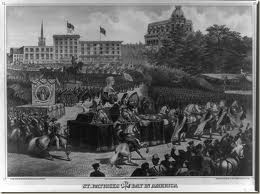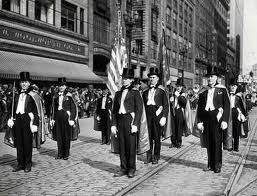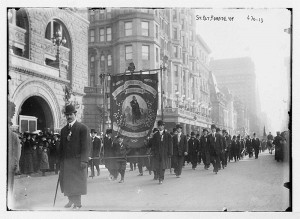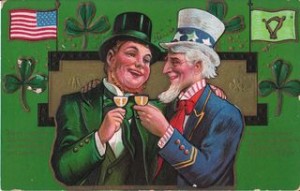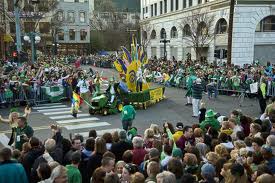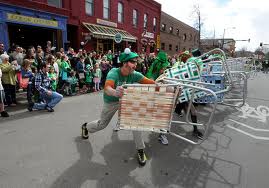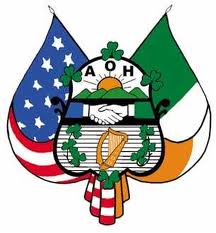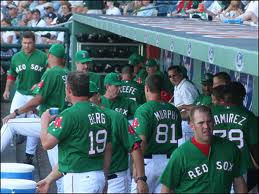Saint Patrick’s Day in the United States
Irish-American immigrants brought Saint Patrick’s Day to the United States. The first civic and public celebration of Saint Patrick’s Day in the 13 colonies took place in Boston, Massachusetts in 1737. The first celebration of Saint Patrick’s Day in New York City was held at the Crown and Thistle Tavern in 1756. In 1780, General George Washington, who commanded soldiers of Irish descent in the Continental Army, allowed his troops a holiday on March 17. This event became known as The St. Patrick’s Day Encampment of 1780.
Today, Saint Patrick’s Day is widely celebrated in the United States by Irish and non-Irish alike. Many people, regardless of ethnic background, wear green-colored clothing and items. Traditionally, those of Irish ancestry who are caught not wearing green are pinched.
Many parades are held to celebrate the holiday. The smallest of these, World’s Shortest St. Patrick’s Day Parade, is said to take place in Hot Springs, Arkansas in the United States annually held on historic Bridge Street which became famous in the 1940s when Ripley’s Believe It or Not designated it “The Shortest Street in the World.” Boulder, Colorado claims to have the shortest parade, which is also less than a single city block.
The New York parade has become the largest Saint Patrick’s Day parade in the world, outside Ireland. In 2006 more than 150,000 marchers participated in it, including bands, firefighters, military and police groups, county associations, emigrant societies, and social and cultural clubs and was watched by close to 2 million spectators lining the streets. The parade marches up 5th Avenue in Manhattan and is always led by the U.S. 69th Infantry Regiment. New York politicians – or those running for office – are always found prominently marching in the parade. Former New York City Mayor Ed Koch once proclaimed himself “Ed O’Koch” for the day, and he continues to don an Irish sweater and march every year, even though he is no longer in office.
The parade is organized and run by the Ancient Order of Hibernians. For many years, the St. Patrick’s Day Parade was the primary public function of the Ancient Order of Hibernians.
The New York parade is moved to the previous Saturday (March 16) in years where March 17 is a Sunday. The event is also moved on the rare occasions when, due to Easter falling on a very early date, March 17 would land in Holy Week. This last occurred in 1913. That year the parade was held on Saturday, March 15, because Easter was on March 23 (making March 17 the Monday of Holy Week). This same scenario is scheduled to arise again in 2008, when Easter will also fall on March 23. In many other American cities (such as San Francisco), the parade is always held on the Sunday before March 17, regardless of the liturgical calendar.
Some cities paint the traffic stripe of their parade routes green. Others, including Chicago, dye major rivers green. Savannah also dyes its downtown city fountains green.
The longest-running Saint Patrick’s Day celebrations in the U.S. are:
- Boston, Massachusetts, since 1737
- New York City, since 1756
- Philadelphia, Pennsylvania, since 1771
- Morristown, New Jersey, since 1780
- Savannah, Georgia, since 1813
- Carbondale, Pennsylvania, since 1833
- Chicago, Illinois, since 1843
- New Haven, Connecticut, since 1845
- San Francisco, California, since 1852
- Scranton, Pennsylvania, since 1862
- Cleveland, Ohio, since 1867
- Pittsburgh, Pennsylvania, since 1869
- Kansas City, Missouri, since 1873
Although the baseball season usually is still in the spring training phase when St. Patrick’s day rolls around, some teams such as the Chicago White Sox and Boston Red Sox, wear green uniforms for the occasion.

